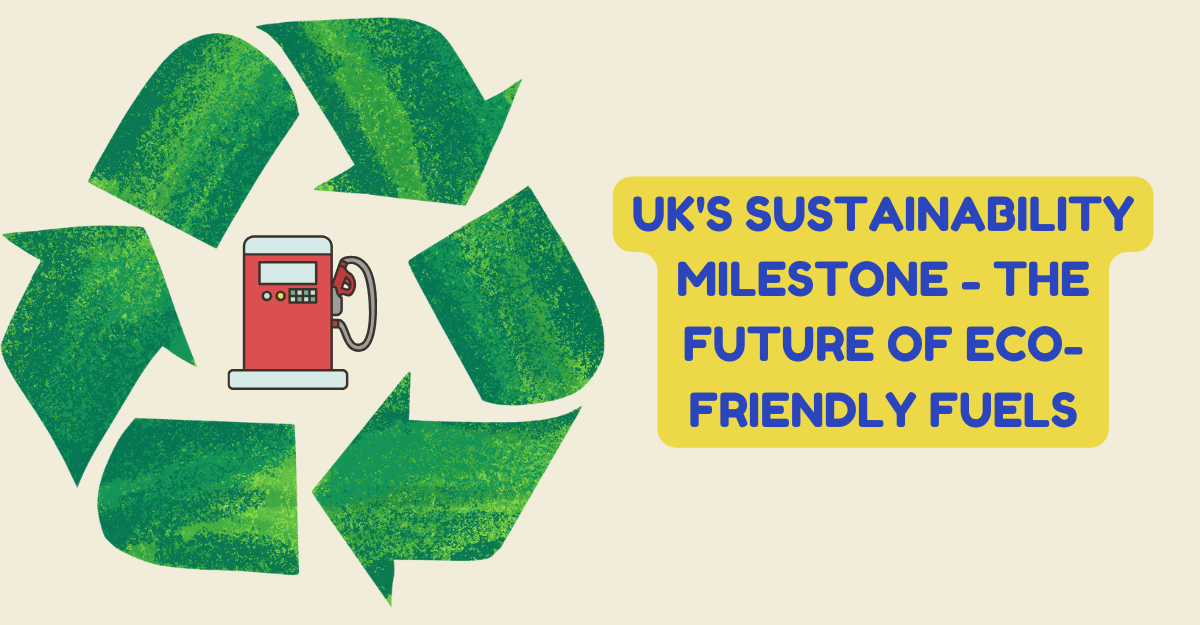
UK’s Sustainability Milestone – The Future of Eco-Friendly Fuels
Almost every country in the world is faced with the issue or environmental degradation and climate change. Some countries are facing the challenge head on while others haven’t still seen the need to aggressively seek solutions. The UK government however, are seriously pursuing a sustainable future and they have attained significant milestones in this pursuit.
The United Kingdom is at the forefront of the adoption of innovative means of reducing carbon emissions and is moving steadily towards more sustainable and cleaner sources of energy. In this article, we will explore the key areas of this journey and some of the eco-friendly fuels and their impact on the ecosystem and humans too.
The Shifting Landscape of Energy
There are quite a number of alternatives that are being explored by leading energy companies in the country and they include HVO, solar, wind and hydropower. Let us briefly explore these alternatives:-
HVO
Due to the clamour for cleaner and more sustainable sources of energy, many companies in the UK are exploring hydropower, solar and wind amongst other sources. One of the leading companies in this pursuit is Syntech a biofuel company that specializes in HVO fuel. HVO is the short form of Hydro-treated Vegetable Oils and it is a biofuel that is extracted from the mixture of vegetable oils and fats.
The process of synthesising HVO from animal fats and vegetable oils entails a special process of hydrotreatment. The fuel produced through this process is so pure that it significantly reduces the emission of greenhouse gases when used for the operation of machinery and in diesel vehicles.
Solar
Sunlight is a free resource that’s readily available and sustainable. This therefore makes it a viable source of energy. Electricity produced from solar panel is renewable energy with low carbon footprint. Solar panels capture the energy of the sun and convert it to electricity that can be used in homes. So by installing these panels, households can generate their own electricity with smaller carbon footprints on the environment.
Wind
Wind is also a natural resource that is freely abundant but has to be harnessed. This element of nature is harnessed through a structure know as a wind turbine. The process of converting wind energy to electricity is quite simple.
The wind blows through the turbine and causes the blades to spin and in the process capture the force (energy) of the wind. The captured energy is sent to a generator through the gearbox of the wind turbine. This energy is then converted to electricity that is distributed through the grid by means of a special known as an inverter.
Hydropower
This is a renewable source of energy that harnesses the force of moving water for the production of electricity. Large scale hydropower project often involve dams. Tidal and run-of –river projects also employ the power of flowing water to produce electricity.
A hydropower dam converts the energy stored in the water reservoir behind the dam to mechanical energy which is also known as kinetic energy.
This kinetic energy is used to rotate a turbine as the water moves through the dam. The generator then converts this kinetic energy into electricity.
The brief explanations we have given of the various energy sources are simplistic at best but they are just to give you an idea of how these sources produce electricity.
Government Commitments
It is no secret that the UK government has shown its commitment to the pursuit of sustainable and renewable energy and has even set a date for a final milestone. The year 2050 has been set as the year of Net Zero Emissions. The transport sector is presently the highest sector in the country that emits greenhouse gases. It has been reported to be responsible for 27% of the total greenhouse gases that are emitted in the country.
You can visit this site: https://www.gov.uk/ for full details of this policy and the journey so far.
Advancements in Biofuels
We will delve a little further into the subject of biofuels because that is the new rave in sustainable and renewable energy. HVO is made from waste materials that are certified; therefore it supports the regeneration and reuse of products, materials and resources in such a way that maintains an eco-friendly environment. This s is known as the circular economy and it also helps to reduce the total emission of CO2 greenhouse gas by as much as 90%
As we mentioned earlier, the transport sector in the UK is the largest contributor to the net greenhouse emissions. That is why it is also the sector that is facing serious challenged due to climate change, out-dated technology and control of localised emissions. Thankfully, HVO fuel is the perfect solution to these issues since it can be used by a good number of industries in on-road and off-road vehicles and also machinery.
Although it’s almost the same as mineral diesel, it has a lot of environmental and logistical benefits.
Advantages of Biofuel
There are many advantages of using biofuels are substitutes for fossil fuels. Like we have already established, biofuels are fuels gotten from organic materials that are renewable. On a grand scale, it reduces the negative effects of the production of fossil fuels which include greenhouse gas emissions, dependence on foreign supplier who can be unreliable and unstable and the possibility of exhaustion of the resources.
Below is a list of the advantages both for the economy and citizens (households and individuals):-
- Offers a higher level of fuel efficiency
- Helps to save cost
- Reduces greenhouse gas emissions
- It is sustainable and renewable
- Enhances the durability of engines
- Reduces environmental pollution
- Has positive impact on the economy through its support for the circular economy model.
- It is biodegradable.
Conclusion
There is so much that can be said about eco-friendly alternatives to fossil fuels and the part that governments have to play. The UK government is assiduously working towards its goal of net zero emissions by the year 2050 and there are milestones to show progress in that direction.
It is now left to every member of the society to also contribute their quota in making this dream a reality. This article has highlighted alternatives that can be engaged to lessen the impact of carbon emissions on the environment. We encourage you to look out for the most suitable alternative for you and give it a try.






